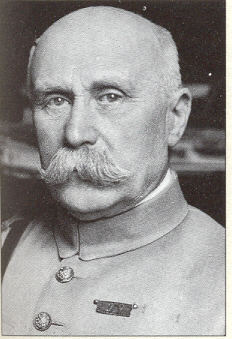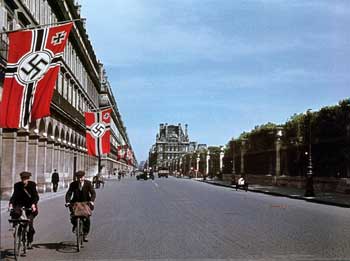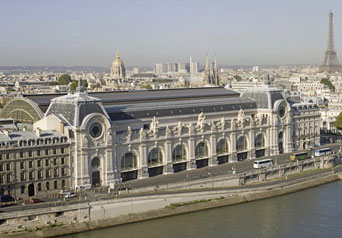After the Allies' declaration of war on Germany, nothing happened for 9 months. Parisians joked about the le drôle de guerre, while the British nicknamed it the "Phoney War", so not much happened in Paris in World War II .
Neither the British troops that had been deployed to the continent nor the Germans launched major operations against each other until April 1940. That month Germany invaded Denmark and Norway and British discontent over this led to the replacement of Prime Minister Neville Chamberlain with Winston Churchill in May 1940.
The Battle of France began in ernest the same day and by the 14th June France had surrendered. The British Expeditionary Force was sent to help the French but they only just avoided capture. Paris fell to German occupation forces.
The Arc de Triomphe was the background the Germans chose to waltz under and make their conquest of Paris official. It June 14th, 140th anniversary of Napoleon's victory at the Battle of Marengo. They wouldn't leave Paris for four years.

As soon as they had control of France the Germans divided it into three parts: a zone under direct German rule (along the western coast and the north, including Paris), the free zone aka Vichy regime (controlled by the French puppet government based in the town of Vichy) and the Italian-ruled zone which was the several departments that shared a border with Italy.
The Vichy regime was led by General Philippe Pétain, the ageing WWI hero of the Battle of Verdun.
Pétain’s collaborationist government proceeded to 'make the best of a bad situation' and behaved as if the Nazis were Europe’s new masters and had to be accommodated. This meant that when the time came for French Jews to be rounded up, there wasn't much resistance.
In total the Vichy regime and the French police force helped the Nazis round up 160,000 French Jews and others for deportation to concentration and extermination camps in Germany and Poland.
But not all France had given up. Former French Undersecretary of War Charles de Gaulle was creating a French resistance. After the fall of Paris, de Gaulle fled to London and from there he appealed to French patriots, in radio broadcasts, to continue resisting the Germans.
This caused a stir in an underground movement, known as the French Resistance, who fought against the Germans. They would either collect information for the allies, help the friends that had been shot down, sabotage the railways... They were never more than 5% of the French population.
But the French resistance was not only active in guerrilla warfare, they also published underground newspapers, and the people that became a part of it came from all social classes, religions and economic situations.
The Allies landed in Normandy on 6th June 1944 (know known as D-Day) and the liberation of France began. On 15th August Allied forces also landed in southern France.
The Germans were defeated and Paris was liberated on 25 August by an Allied force led by the French. Architecturally Paris in World War II was not so affected as other cities and regions of the country.

Blessedly no battles took place in the capital so Paris in World War II was practically unscathed. Despite this there was still much rebuilding, physically and socially, to be done when the war ended. The post-war governments were unstable which gave rise to the chaos that was to come in the 1960s. This era saw Paris turn into a modern city, with the building of motorway links and international airports at Orly and Roissy.
In 1968 the revitalized liberalism that the whole world was feeling led to the student-directed 'Spring Uprising' of 1968. The Sorbonne was occupied, and, just like the Parisian foundational myth, barricades were erected all over the Latin Quarter, and 9 million of the French decided to join in a crippling general strike.
Paris appeared on the brink of anarchy. De Gaulle may have kicked some Nazi ass, but angry hippies seemed harder to crack. He gave up, retired and left the whole mess to George Pompidou in 1969.
In the 1980'sThe Allies landed in Normandy on 6th June 1944 (know known as D-Day) and the liberation of France began. On 15th August Allied forces also landed in southern France.
The Germans were defeated and Paris was liberated on 25 August by an Allied force led by the French ..
Blessedly no battles took place in Paris so the center of the city got through World War II practically unscathed. Despite this there was still much rebuilding, physically and socially, to be done when the war ended. The post-war governments were unstable which gave rise to the chaos that was to come in the 1960s. This era saw Paris turn into a modern city, with the building of motorway links and international airports at Orly and Roissy.
In 1968 the revitalized liberalism that the whole world was feeling led to the student-directed 'Spring Uprising' of 1968. The Sorbonne was occupied, and, just like the Parisian foundational myth, barricades were erected all over the Latin Quarter, and 9 million of the French decided to join in a crippling general strike.
Paris appeared on the brink of anarchy. De Gaulle may have kicked some Nazi ass, but angry hippies seemed harder to crack. He gave up, retired and left the whole mess to George Pompidou in 1969.
In the 1980's Mitterand initiated the Grands Projets which transformed the architectural landscape of Paris. He was responsible for the Musée d’Orsay, the Louvre Pyramid, the Opéra Bastille and the Grande Arche de la Défense amongst others.
Despite several ups and downs in French politics and some more iffy construction over the next few decades, Paris bumbled along nicely.
Today's Paris is very much a product of its past, whilst still being at the forefront of the modern world. However, despite all its beauty and elegance, Paris is not a city without problems.
Like much of modern Europe, issues of immigration and integration are a big problem and conflicts between Jewish and Muslim North Africans plague the Parisian banlieu.
2005 saw a spate of violent riots break out on the city's streets. A domino effect ensued, meaning that the chaos soon spread around the country as the number of rioters, generally the offspring of North African immigrants, grew. Cars were burnt, windows smashed and police attacked.
Despite this sporadic violence Paris is one of the few success stories when it comes to over-populated, multi-cultural metropolises.

The Arts such as fashion, music and architecture continue to be nurtured so that “The City of Lights” still stands as an aesthetic haven of avant-garde thinkers, intellectuals, and romantics, and will for years to come.
initiated the Grands Projets which transformed the architectural landscape of Paris. He was responsible for the Musée d’Orsay, the Louvre Pyramid, the Opéra Bastille and the Grande Arche de la Défense amongst others.
Despite several ups and downs in French politics and some more iffy construction over the next few decades, Paris bumbled along nicely.
Today's Paris is very much a product of its past, while still being at the forefront of the modern world. However, despite all its beauty and elegance, Paris is not a city without problems.
Like much of modern Europe, issues of immigration and integration are a big problem and conflicts between Jewish and Muslim North Africans fill the Parisian banlieu.
2005 saw a spate of violent riots break out on the city's streets. A domino effect ensued, meaning that the chaos soon spread around the country as the number of rioters, generally the offspring of North African immigrants, grew. Cars were burnt, windows smashed and police attacked.
Despite this sporadic violence Paris is one of the few success stories when it comes to over-populated, multi-cultural metropolises.
The Arts such as fashion, music and architecture continue to be nurtured so that “The City of Lights” still stands as an aesthetic haven of avant-garde thinkers, intellectuals, and romantics, and will for years to come.